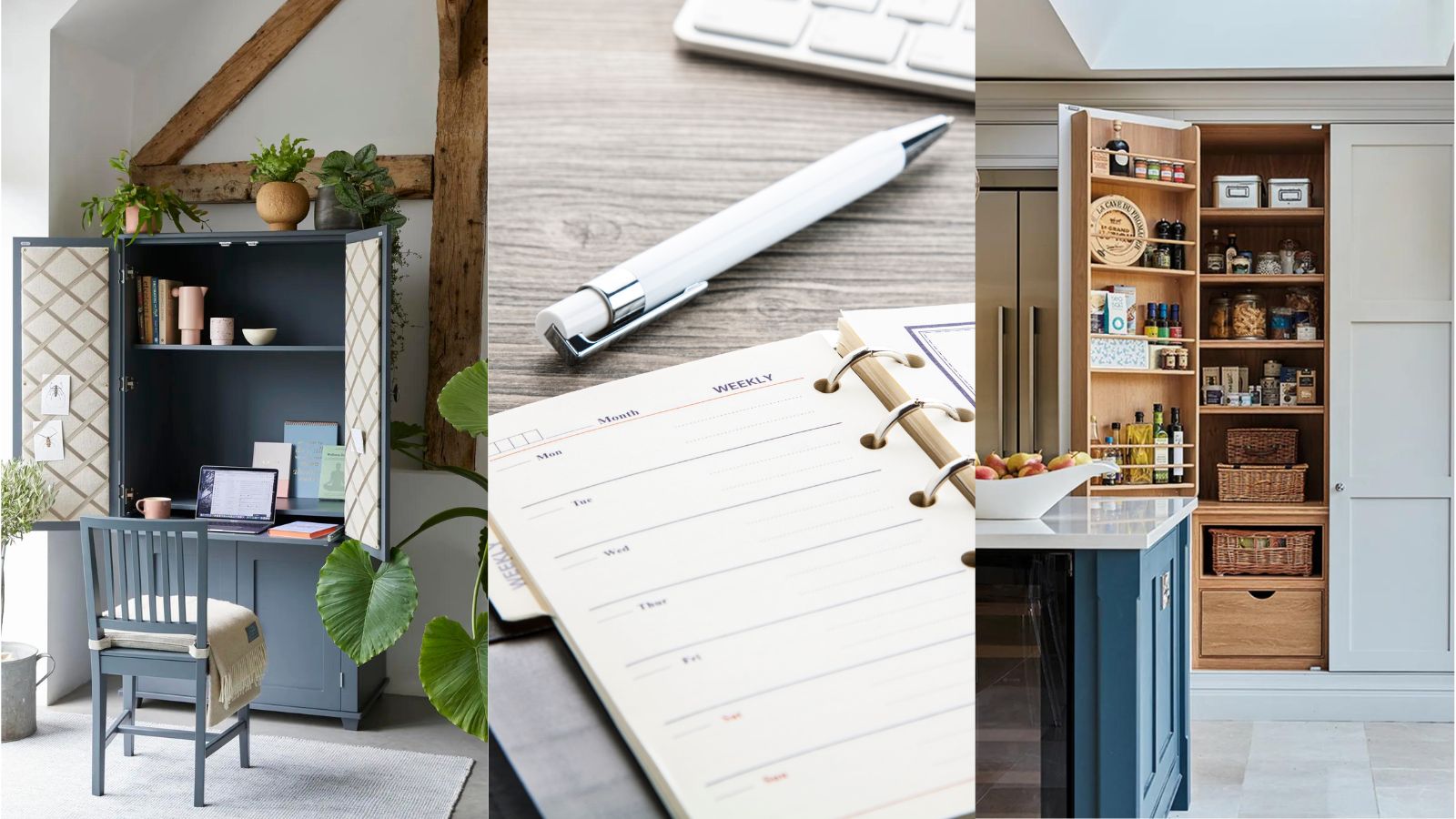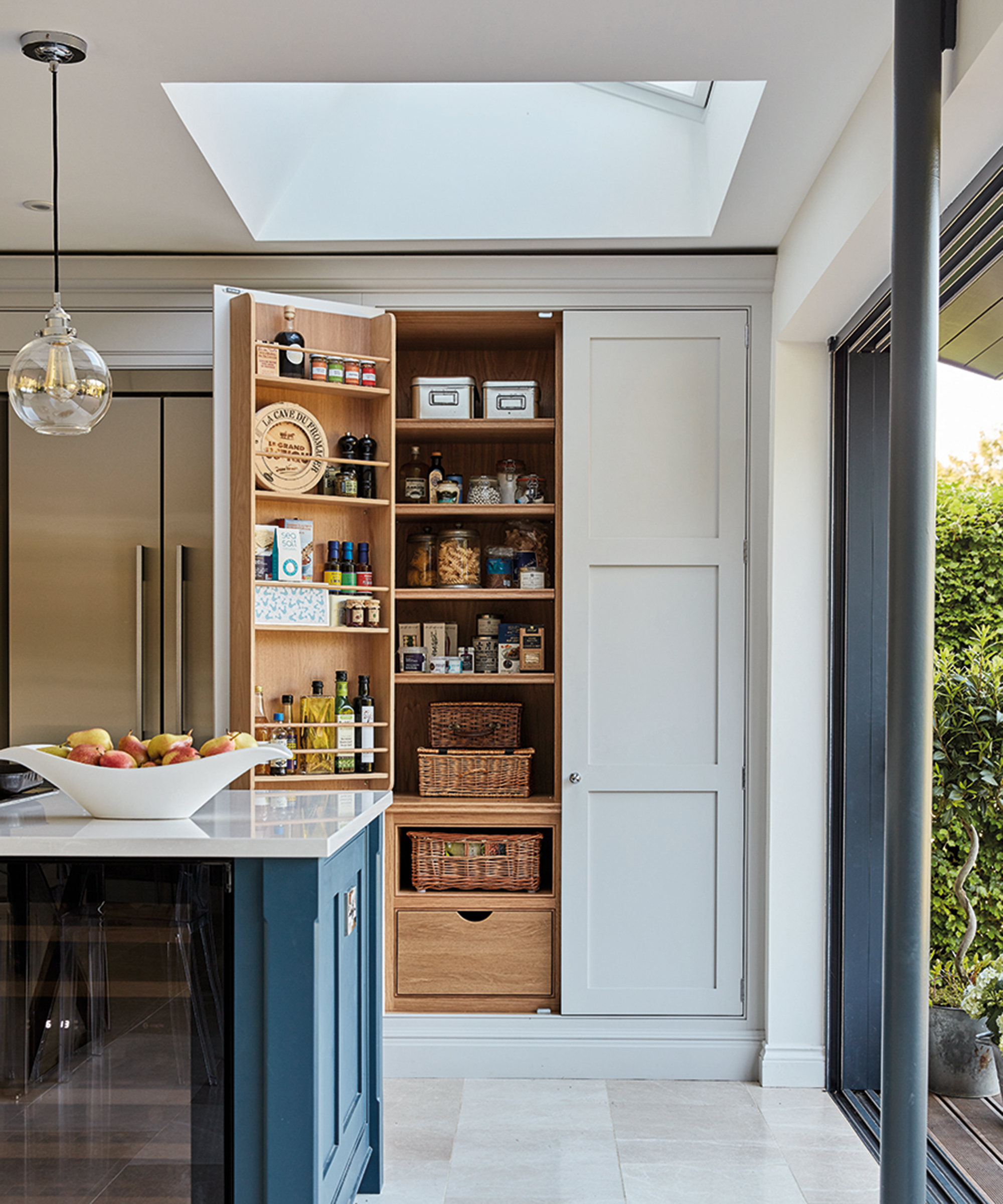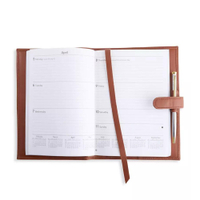I'm a professional organizer, and this is how I create a weekly organizing schedule that never fails
Streamline your weekly tasks with these professional tips for creating your own organizational dashboard


Productivity and streamlining a busy schedule are some of my favorite topics. We are busier now than ever, so we must be intentional about our time.
I declutter and organize my schedule just like I declutter and organize my belongings. I need to have space for work, family, and house chores, but it’s also important to me to have downtime and time for friends. I constantly evaluate what’s important to me and what can be removed from my schedule.
Keep reading for how I streamline my weekly tasks using a weekly dashboard. I use this method to ensure I keep bite-sized decluttering and organization tasks on my schedule each week so my house rarely becomes an unsurmountable project.
How to create a weekly organizing schedule
Struggling to stay on top of your home organizing tasks? My weekly dashboard might be the perfect solution for you. Here are the five simple steps I follow:
1. Put it on paper

I must write down my tasks rather than let them swirl around in my brain. Putting them on paper frees up brain space to think about other things and not worry about forgetting something. Seeing my tasks on paper also helps me determine if I’m putting too much on the schedule for the week or if maybe I can squeeze in one more task.
I call this sheet of paper my 'dashboard'. I encourage you to have your own weekly guide or dashboard. You can use a planner or a blank sheet of paper or search for weekly planners online to download a printable.
Executive Leather Daily Planner
$175 at Saks Fifth Avenue
Take your daily and weekly planning to the next level with these exquisite journals by Royce New York. Beautifully bound in full grain American leather, each planner features stunning silver gild edged pages and refined cotton stationery.
2. Note the Week’s Activities
Before I think about the tasks I want or need to do, I think about what the week’s calendar will dictate. Things to note are birthdays, appointments, meetings, school schedules, etc. Only list things that affect your day-to-day activities. This isn’t where you write family appointments unless you are the one going.
How does it look? Is your week full, or do you have some space for other tasks?
3. Create Categories of Other Tasks

What types of tasks do you do each week? Think about work, volunteering, home chores, kids, etc. These categories will become headers on your dashboard.
If you are going through a home remodel, for example, you may need a category for bathroom remodel tasks and a category for kitchen remodel tasks. I usually have an area of my home as a category, so I know that is my focus for the week. It changes every two to three weeks, so by the end of that time, it’s spruced up and feeling fresh.
I love that this system can evolve week-to-week based on what’s going on in your life. It’s also a great way to blend your work and home tasks so that you aren’t stretched too thin in any specific area.
4. Write Down Tasks

This is where you write down the exact tasks that need to happen this week. The first one to three tasks are the most important. Everything else listed would be nice to get done, but it can wait until the following week if necessary.
Ideally, these tasks aren’t huge projects but rather smaller tasks within a project. For example, in the Home category, I wouldn’t write declutter the closet. That could take a couple of days! Instead, for a more manageable task, I would write 'declutter dresses' as one task and 'declutter shoes' as a second task. How aggressive you are in cleaning out your closet that week depends on how many other tasks you must get done in all of the other categories.
My favorite part of this system is that if a task keeps getting bumped to the next week, and then the next, and the next, then that is a big clue that the task probably shouldn’t be on your to-do list at all.
5. Pencil in Days of the Week for Your Tasks

It’s time to evaluate when your tasks will get done. I like having a plan for each day so that I don’t have to wonder what should be done next. The pause between activities can quickly get me off track.
Look at your calendar for the week to see how much free time you have outside of scheduled activities. Go through your list and put a little note by what day of the week you plan to do the task. Try to put the things you dread the most toward the beginning of the week when you have more energy and motivation.
If you have an organizing project, think about what parts feel overwhelming and do those toward the beginning of the week. Keep the tasks bite-sized so you can knock them out quickly and feel the satisfaction of getting them done.
Last but not least, don’t beat yourself up for taking longer than you think to get things done. Social media has us believing that the time between a before and after is a snap of a finger, but this is simply not true. For some projects around the house, such as decluttering a junk drawer, you may never get to a post-worthy after. The key is to get to an after that works well for you and doesn’t force you to put all other important tasks and activities on the back burner.
Sign up to the Homes & Gardens newsletter
Design expertise in your inbox – from inspiring decorating ideas and beautiful celebrity homes to practical gardening advice and shopping round-ups.

Caroline Roberts, a certified KonMari Consultant and professional organizer, founded the organizing agency The Simplified Island in 2019. Caroline believes being organized goes much deeper than pretty bins and can be life-changing. She recognized her organizing and streamlining skills were unique as she ran her marketing agency, Coastal Connections Marketing, and raised her two sons.
-
 Martha Stewart's intelligent cabinets 'take every inch into consideration' – their 'visually light' style will solve your small kitchen storage problems
Martha Stewart's intelligent cabinets 'take every inch into consideration' – their 'visually light' style will solve your small kitchen storage problems'Every kitchen can be beautiful and functional, no matter what the size': 9 years since sharing her clever storage, Martha's cabinets are just as beautiful
By Megan Slack Published
-
 This once-dated kitchen is now a timeless space with the coziest details – and its the classic color palette that's made it a chic, welcoming space
This once-dated kitchen is now a timeless space with the coziest details – and its the classic color palette that's made it a chic, welcoming spaceWarming colors and natural materials combine to create this enduringly classic kitchen scheme
By Molly Malsom Published
